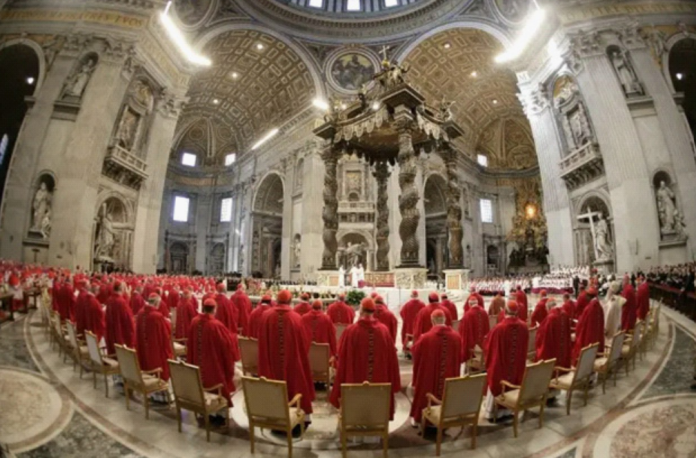By Fr. Okhueleigbe Osemhantie
A hush has settled over the Eternal City. Pilgrims pause more often before Bernini’s colonnades. The cobblestones of Saint Peter’s Square bear the weight not merely of human feet, but of history’s breath as the Church once again prepares to enter the sacred chamber of discernment. With May 7, 2025 fixed on the ecclesiastical calendar, the eyes of the faithful are already turning heavenward, anticipating the beginning of that most solemn and secret of ecclesial rituals – the Conclave.
Though the Chair of Peter stands momentarily vacant, the Church is never orphaned. The Cardinal-electors, men chosen for their wisdom, pastoral sensitivity, and global representation, will soon pass beneath Michelangelo’s Last Judgment, not to be judged by man, but to open themselves to the silent whisperings of the Spirit. The College is bound by more than regulation; they are wrapped in prayer, encircled by the petitions of the People of God, and immersed in the consciousness that their decision must echo the divine will.
In the twenty-one centuries since the martyred fisherman of Galilee laid down his cross on the Vatican Hill, the process of choosing his successors has evolved from the early acclamations of the clergy and laity to the cloistered conclave, guarded by Swiss halberds and sealed by oaths that pierce even the most subtle ambition. This present moment draws from that long lineage, where each conclave has served as both a mirror of the Church’s trials and a compass for her journey.
Some conclaves in history were swift, the Holy Spirit seemingly descending with immediacy — as when Karol Wojty was elected in October of 1978, or when Angelo Roncalli emerged as John XXIII after barely four rounds of balloting. Others required long and painful deliberations, weighed down by faction, politics, or the absence of a clear shepherd. The Viterbo Conclave of the thirteenth century, lasting nearly three years, tested the endurance of both patience and piety. In other times, like the epochal gathering at Constance in 1417, the Church needed not merely a pope but a unifier, a healer of schism. Some papacies began in joy but were curtailed by mystery, like the brief reign of John Paul I, while others endured through decades of cultural convulsion, as with Pius IX and his confrontation with modernity.
Each conclave unfolds as a drama of providence, often beyond the grasp of worldly insight. The election of the hermit Celestine V stunned Christendom in 1294, while the ascent of the scholarly Benedict XIV in 1740 came only after half a year of deadlock. The conclave that followed Benedict XVI’s resignation in 2013 once again invited the world to consider the unpredictable nature of divine election, when Jorge Mario Bergoglio emerged as Francis, a voice from the margins whose name would herald a ministry of inclusion, reform, and the rediscovery of Gospel simplicity.
Now, the Church stands once more at the threshold of apostolic transition. The conclave of 2025 will not only elect a man but will articulate a direction. The Cardinals carry within their red birettas the cries of a global Church – wounded yet faithful, burdened yet hopeful, challenged by secularism yet enriched by a new generation of believers rising from the global South. The task before them is as sacred as it is perilous: to discern not merely who is capable, but who has been prepared by grace and tested by time.
As the world awaits the chimney’s breath – that gentle puff of white smoke which, like the cloud above the tabernacle of old, signals divine favour – the faithful are called to deeper prayer. For in the silence of the conclave, it is not the voice of a man that must echo most loudly, but the murmur of the Spirit whispering, “Tu es Petrus”.


